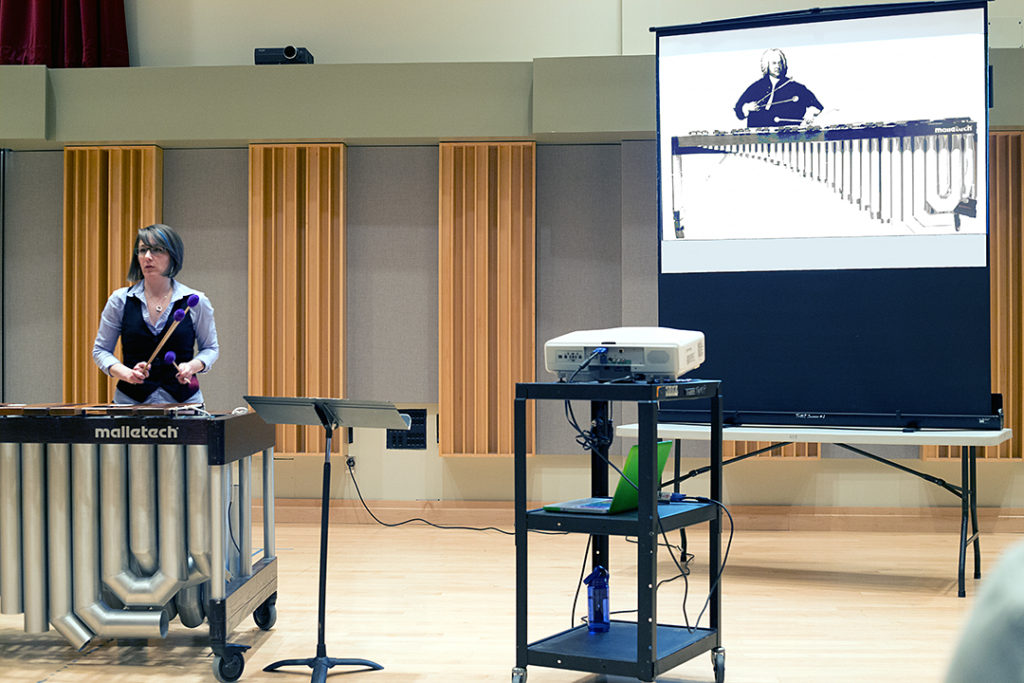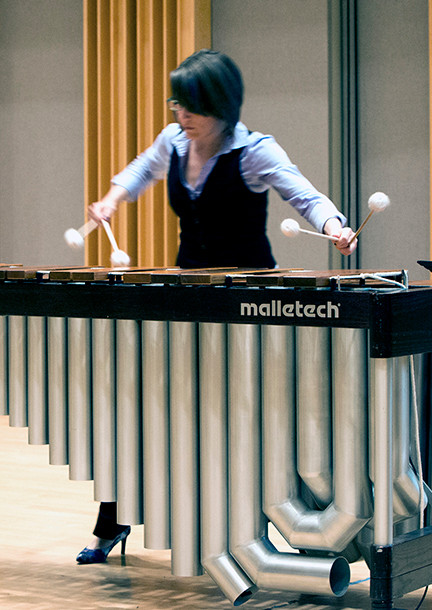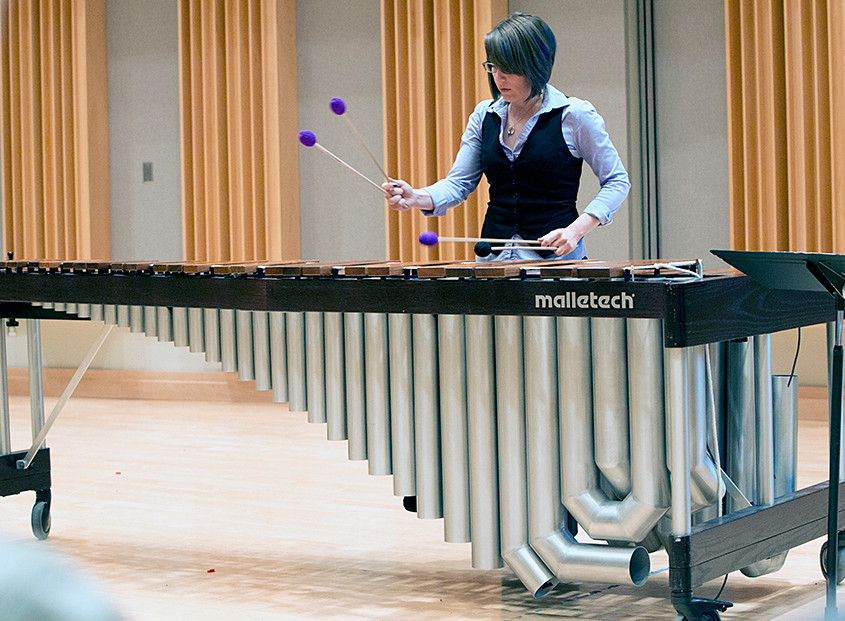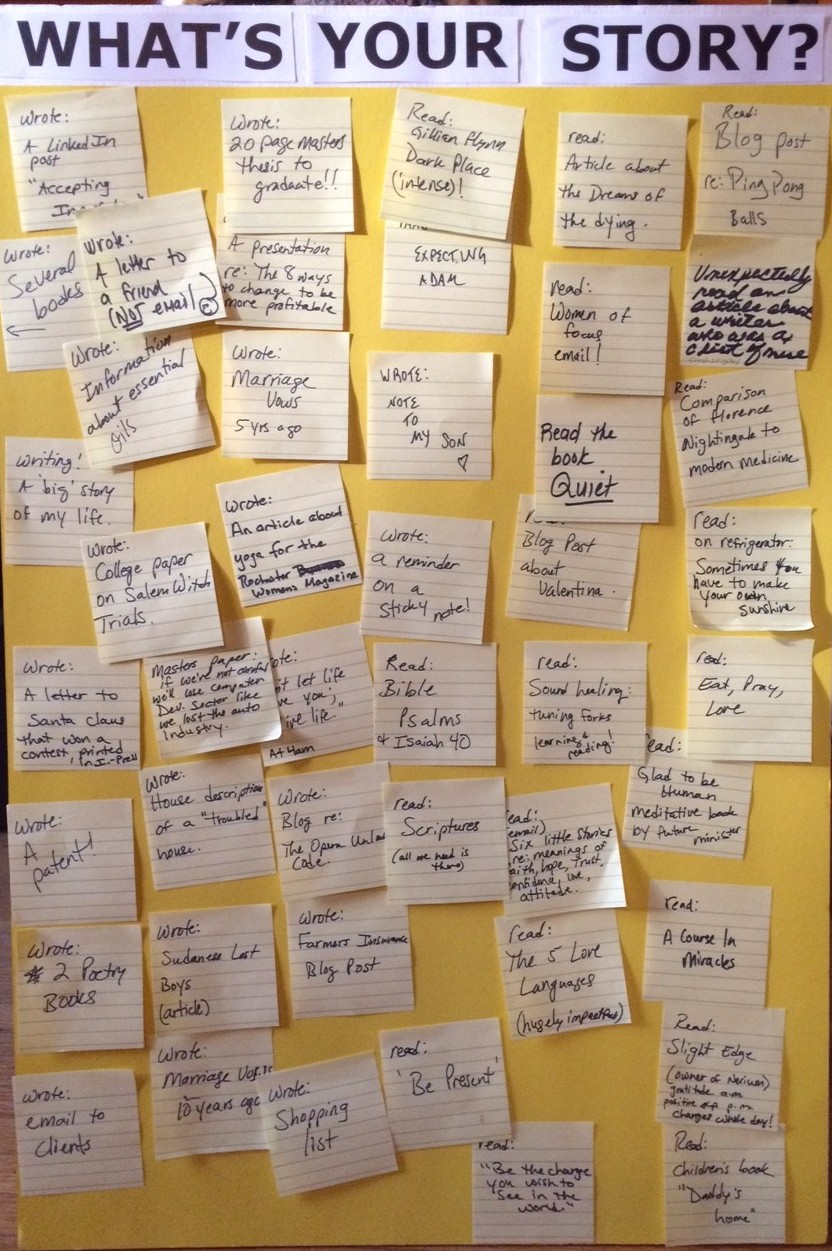The husband and I own a lot of music. Our combined CD collection exceeds 400 albums, and about 15 years ago he acquired an obscene amount of ‘shared’ music from a C-shift lab computer at work. Our digital catalog now numbers around 5,000 songs; two MP3 players are dedicated mixes for both the 1980s and 1990s.
Music is important to us. The husband is a former saxophone player (school band and marching band), shortly a bassist, and a longtime drummer who currently owns four kits and plays two (three if you count the kit at church).
Me? Music moves me; I blast everything from Bach to the Beastie Boys, and am completely enamored of live music. But I can’t play a note. I can’t even identify a note. I did learn the rudiments of guitar several years ago, but beyond stringing together a few chords read off of tab, actually playing a song eluded me. Music is a love, but not my gift. I accept that.
¡Ay, Marimba!

Last week, we had a unique music opportunity. We attended a Doctor of Musical Arts lecture recital at the Eastman School of Music for the wife of a friend of The Husband. Andrea is a percussionist, having trained in her craft for 15 years. Her chosen instrument is the marimba.
Do you know what a marimba is? Yeah, I didn’t really know, either. But it’s not a xylophone (she plays that, too).
I have now seen a marimba, and have seen it played by an expert. It looks like something out of the Mos Eisley cantina, and sounds soothingly simple, yet wildly complex. Andrea played marimba demonstrations throughout her lecture, and from what little I heard she can probably seriously shred on that thing.
Andrea is recently returned from a stint teaching college-level music students in Oklahoma. Her marimba recital was a presentation titled, “Affekt and Execution: Historical Considerations and Contemporary Techniques for performing Bach on Marimba.”
The language of music
As the recital hall seats around us filled with music students and professors, we studied the six page lecture handout. This is one example paragraph:
Dissonance affects harmony, phrasing, and ornamentation, ultimately facilitating necessary tension and release on multiple musical levels. In Baroque performance practice, it was treated as a necessary means for dramatic contrast. In the realm of musical rhetoric and expression of affekt, emphasizing various types of dissonance such as evocative chords or suspensions with strong dynamics or articulation help to form hierarchical pillars within musical phrases. Ornamentation also provides a foreground level of dissonance to embellish melodic lines.
I re-read that paragraph several times before the recital began. All the words individually I understand, but strung together? May as well have been Chinese. I was lost.
Then Andrea started her lecture.
She spoke the same or similar words as in the handout, and her delivery was very fast. Usually a fast-speaking lecturer loses me because my auditory processing is a tad off, but, maybe owing to the superior acoustics in the recital hall, I heard every word she said. But, I understood only about 10% of the content.
Bach to the wall
The recital was 90 minutes of musical concepts and methodology, intermixed with enchanting marimba music that she played with four mallets in-hand at one time.
Where is she even hitting? How is it making that sound?
The projected slides showed sheet music absolutely black with notes. When she pointed out something happening in the 11th measure, I thought… What’s a measure?
All throughout, the students sitting around us are nodding their heads, smiling, and a fully engaged audience. At the end of the lecture, head spinning, I thought, What just happened? And, WHY teach Bach to marimba students?
Now, Andrea, if you’re reading this, stay with me. The story is only half told. I’m going to address the rest of this post to you.

In your summation, there was one phrase that resonated with me, something about equipping students to make executive choices. I hung onto understanding that, even if at first I didn’t get the point of lecturing about teaching Bach pieces on a marimba. You have to allow that to a complete novice, that is a weirdly specific topic.
The up close look at your marimba helped, learning how the bars work and how the pipes amplify the notes. It also helped to see that there were TWO rows of bars…that knowledge alone began to unravel what I heard.
The husband and I talked about it all the way home from your recital. I commented that, to me, your topic presented music as a science, similar to how I have heard that music and math are related skills—placing it on a landscape that I think of as inaccessible to me. My mind does not think in numbers. But, I have a healthy respect for both numbers and music.
I had a couple glasses of wine, went to bed, and apparently my subconscious worked at ‘Bach on the Marimba’ all night.
The next morning over breakfast, The Husband and I resumed the conversation. Something clicked. I finally got it. (I think. You tell me.):
Affekt. Dissonance. Meter, Tempo, & Phrasing. Stylistic Rhythmic Manipulation and Ornamentation. Prelude. Allemande (French and German). Courante (French and Italian). Sarabande (Spanish, German, and French). Gavotte (French). Gigue (French Style).
^All these. I think I get it.
Learning the Bach pieces adapted for Marimba provides tools for students to study these diverse methods of expressing the music—the different emotions that the styles will evoke for the listener. And, student, what do you want your listener to feel?
It’s not necessarily about learning to play Bach. It’s about how that exercise instructs playing everything after. Learning a broad spectrum of methods to play the complex Bach pieces creates a context for students to apply to all the marimba music they will play going forward. Knowing how to do it, the student is now equipped to make informed decisions when considering how to play the notes of any piece of marimba music. Music, after all, is a language. What do you want to say?
But, the Bach is awfully fun. Right?
Then my mind was further blown considering the topic’s fascination potential. Why did the French, Italians, Germans, and Spaniards play the movement types differently? Did their national styles overlap in the musical timeline, or did each style evolve from another culture’s style? What was happening in their societal history to influence their styles? What were the political, economic, religious, and social pressures at work?

Marimba for the masses
Anyway, I don’t have any musical skill. I’m sure if I had the time and ambition, I could learn the mechanics, but that’s not the same as having the music in you.
You do, Andrea. The Husband (mine) has it, too. He just knows how to beat those drums. He also just knows how to draw anything, watercolor paint, build things out of wood, carve waterfowl—just about any art or craft is his to master. I hear Your Husband has a computer keyboard he built and custom-programmed himself; I can’t think of what I would want my keyboard to do besides type out the alphabet, but there’s his gift.
I think that each person has instinct for that which is their gift in life. Each individual’s identity as a human being is inextricably intertwined with their instinctual gift. That’s why people don’t say, I do art or I do music. They say, I AM an artist, I AM a musician.
Music is a great love of my life, on par with books. Like a good story, good music transports, uncovering truths about myself and opening my imagination to possibilities about the world around me. The Husband can listen to a song and easily parse out all the instruments’ roles. Not me. I just hear the music.
That’s it, Andrea. I’ll never play the marimba, and certainly not Bach on marimba. But if I ever had to learn, I now get why I should.

 Sticky Stories: Notes from a Trade Show
Sticky Stories: Notes from a Trade Show
Interesting! Thanks for sharing your experience and insights too…